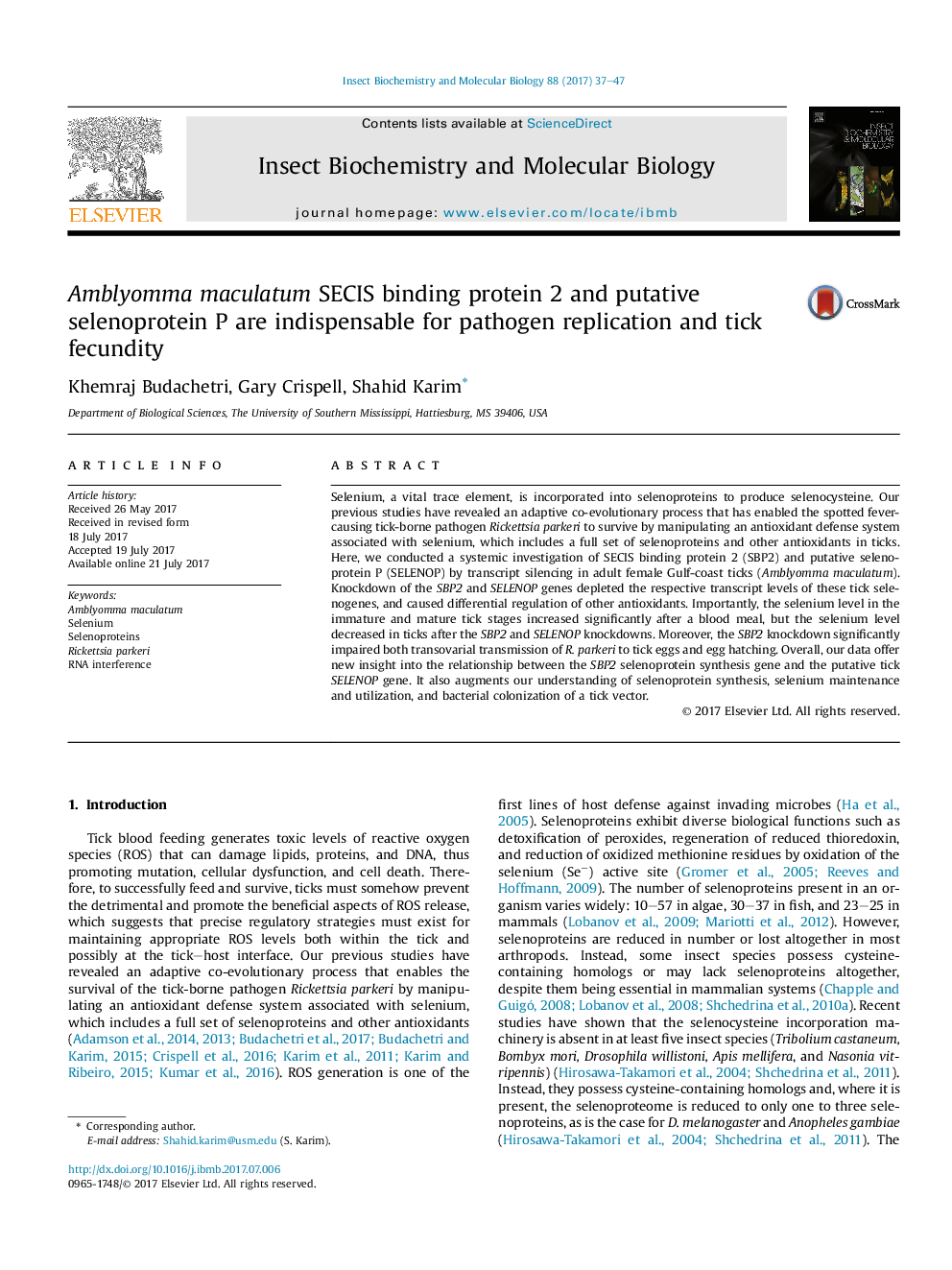| کد مقاله | کد نشریه | سال انتشار | مقاله انگلیسی | نسخه تمام متن |
|---|---|---|---|---|
| 5511214 | 1539464 | 2017 | 11 صفحه PDF | دانلود رایگان |

- Tick's feeding and infection status differentially regulated SBP2, SEPHS2 and SELENOP expressions.
- Selenium level significantly increased with blood meal but not with infection.
- Amblyomma SBP2 is required for selenoproteins synthesis, tick's reproductive fitness and transovarial transmission of Rickettsia parkeri.
- Amblyomma SELENOP plays role in selenoproteins synthesis, tick's reproductive fitness, and selenium homeostasis.
Selenium, a vital trace element, is incorporated into selenoproteins to produce selenocysteine. Our previous studies have revealed an adaptive co-evolutionary process that has enabled the spotted fever-causing tick-borne pathogen Rickettsia parkeri to survive by manipulating an antioxidant defense system associated with selenium, which includes a full set of selenoproteins and other antioxidants in ticks. Here, we conducted a systemic investigation of SECIS binding protein 2 (SBP2) and putative selenoprotein P (SELENOP) by transcript silencing in adult female Gulf-coast ticks (Amblyomma maculatum). Knockdown of the SBP2 and SELENOP genes depleted the respective transcript levels of these tick selenogenes, and caused differential regulation of other antioxidants. Importantly, the selenium level in the immature and mature tick stages increased significantly after a blood meal, but the selenium level decreased in ticks after the SBP2 and SELENOP knockdowns. Moreover, the SBP2 knockdown significantly impaired both transovarial transmission of R. parkeri to tick eggs and egg hatching. Overall, our data offer new insight into the relationship between the SBP2 selenoprotein synthesis gene and the putative tick SELENOP gene. It also augments our understanding of selenoprotein synthesis, selenium maintenance and utilization, and bacterial colonization of a tick vector.
358
Journal: Insect Biochemistry and Molecular Biology - Volume 88, September 2017, Pages 37-47